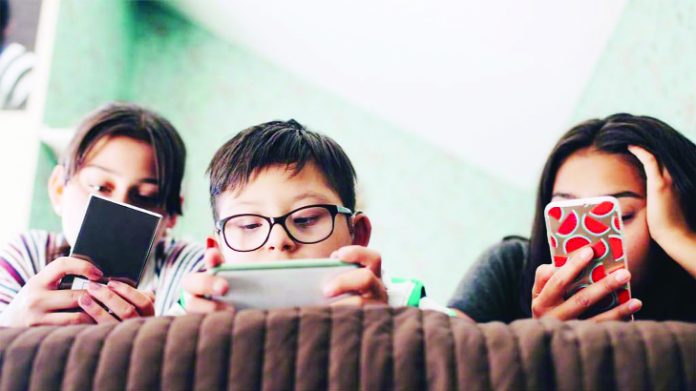Vijay Hashia
Last weekend, amid a lively WhatsApp chat in a group, I forwarded a picture of a political leader, eliciting a mix of laughter and curiosity. A friend questioned the relevance of my antics to that group conversation, prompting me a deeper reflection on the ubiquitous role smartphones play in our lives. This reflection is particularly relevant for teenagers and young adults who are constantly engaged in various activities on their devices.
The rampant use of smartphones not only diminishes attention span and ability to focus on tasks for extended period but also poses financial, psychological, physical, and social risks, especially for youth and teenagers. Social media platforms, in particular, have negatively impacted teenagers’ mental health due to information overload from digital gadgets and numerous apps. Research indicates that teenagers who spend over three hours daily on social media are twice as likely to exhibit symptoms of anxiety and depression.
Two tragic incidents in Gujarat, last year, highlight the severity of this issue. In Surat, a class 9 student committed suicide after her parents refused to buy her a mobile phone, advising her to focus on her exams instead. Despite her father’s promise to buy the phone after her exams, the student’s despair led to her tragic decision. Similarly, in Rajkot, a Class 12 student took her life after her father instructed her not to take her mobile phone to school. The ensuing argument led her to drink poison. Both incidents are under police investigation, with Accidental Death Reports (ADR) registered.
These tragic events highlight the growing addiction to smartphones among students, leading to extreme actions. Extensive studies show that excessive social media use increases mental distress, self harm and suicidal tendencies in teenagers. This dose-dependent relationship negatively impacts adolescents’ self-perception and relationships through social comparison and cyber- bullying.
Teenagers’ heavy smartphone use and media multitasking lead to chronic sleep deprivation and adverse impacts on cognitive control, academic performance, and socio-emotional functioning. Studies have revealed that students who spend more time on social media platforms are more likely to experience feelings of envy and a sense that others in their social network are better off. The term ‘FOMO’ (fear of missing out) describes the pervasive apprehension that others might be having rewarding experiences from which one is absent, contributing to increased stress related to platforms like WhatsApp, Facebook, Instagram, and X.
Concerns have been raised about social media platforms being deliberately designed using behavioral psychology, neuroscience, and artificial intelligence to promote behavioral reinforcement and addiction. Moreover, teens and youth often communicate suicidal thoughts and self-harm behaviors online, including sharing images of self-inflicted injuries. This emphasizes the potential for romanticizing mental illness and normalizing self-harm among teenagers.
There is an urgent need for public awareness campaigns and social policy initiatives that promote nurturing home and school environments. These environments should foster resilience as youth navigate the complexities of adolescence in today’s digital age.
Should governments and service providers implement warning labels akin to anti-tobacco labeling? While warning labels could impact, if not fully, but substantially, make social media platforms more cautious in their marketing strategies. However, the responsibility of ensuring these warnings are heeded falls squarely on parents and other responsible adults.
Effective intervention requires not just smartphone rules for teens but also open, difficult conversations. Psychologists and educators recommend reducing screen time in general and encouraging more unstructured play and offline activities. Practicing what they preach, parents should begin by limiting their own social media use, especially in their children’s presence. Youth increasingly interact online rather than in person, and smartphones can interfere even with face-to-face interactions, a phenomenon termed “phubbing,” which is attending to one’s phone in the presence of others which may lead to greater distraction and lower enjoyment during social interactions compared to when phones were put away. Excessive use was also found to predict distraction, which in turn predicted greater boredom and worse overall mood.
Social media use becomes problematic when it exceeds one to two hours daily. Encouraging parents to actively limit their children’s and teens’ use of smartphones and social media can be beneficial. Parental limits can reduce media use by younger children, open discussions focused on positive engagement and guidance is more effective for adolescents. Parents must also be reminded that they model smartphone use with their behavior; that heavy parental smartphone use was associated with poorer quality of interactions with their children. Families can set boundaries for smartphone and social media use, such as limiting usage to set times and common living areas in the home. Discussing the adverse impacts of smartphones on learning and the benefits of keeping phones away while studying can serve as additional motivation. Encouraging responsible smartphone use and fostering environments that promote healthy, offline interactions are crucial steps in mitigating the negative effects of smartphone addiction among youth.
Last but not least, fostering resilience and healthy habits in young minds requires a collective effort. By promoting awareness, setting boundaries, and leading by example, we can help mitigate the adverse impacts of excessive smartphone and social media use on our teenagers and youth.
Trending Now
E-Paper


